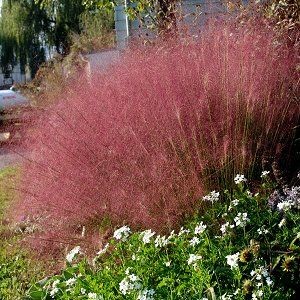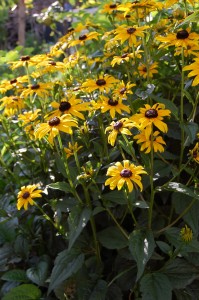Is There Anything Deer Will Not Eat?
go.ncsu.edu/readext?211848
en Español / em Português
El inglés es el idioma de control de esta página. En la medida en que haya algún conflicto entre la traducción al inglés y la traducción, el inglés prevalece.
Al hacer clic en el enlace de traducción se activa un servicio de traducción gratuito para convertir la página al español. Al igual que con cualquier traducción por Internet, la conversión no es sensible al contexto y puede que no traduzca el texto en su significado original. NC State Extension no garantiza la exactitud del texto traducido. Por favor, tenga en cuenta que algunas aplicaciones y/o servicios pueden no funcionar como se espera cuando se traducen.
Português
Inglês é o idioma de controle desta página. Na medida que haja algum conflito entre o texto original em Inglês e a tradução, o Inglês prevalece.
Ao clicar no link de tradução, um serviço gratuito de tradução será ativado para converter a página para o Português. Como em qualquer tradução pela internet, a conversão não é sensivel ao contexto e pode não ocorrer a tradução para o significado orginal. O serviço de Extensão da Carolina do Norte (NC State Extension) não garante a exatidão do texto traduzido. Por favor, observe que algumas funções ou serviços podem não funcionar como esperado após a tradução.
English
English is the controlling language of this page. To the extent there is any conflict between the English text and the translation, English controls.
Clicking on the translation link activates a free translation service to convert the page to Spanish. As with any Internet translation, the conversion is not context-sensitive and may not translate the text to its original meaning. NC State Extension does not guarantee the accuracy of the translated text. Please note that some applications and/or services may not function as expected when translated.
Collapse ▲High populations and disappearing woodland habitat are forcing deer to seek food in our backyards and gardens. One of the easiest ways to minimize deer damage in your yard is to landscape with plants deer prefer not to eat. While no plant is deer proof, there are many good landscape plants for this area that deer find less palatable – a solution that is both effective and relatively low-cost, once you know which plants to choose.
Deer Resistant Trees and Shrubs
Like goats, deer are browsers who feed on a variety of plants, including trees and shrubs. Large trees tend to be spared simply because they are too tall for deer to reach all but the lowest branches, leaving small trees and shrubs to bear the brunt of the damage, especially in winter. There are several trees and shrubs that have withstood the test of time and proven to be deer resistant. This does not mean deer will not eat them if it comes down to a choice between eating something they don’t like and starving to death. But most of the time these are varieties deer will pass over in favor of other plants.
Deer resistant small and medium size trees include river birch, crape myrtle, Carolina cherrylaurel, and chaste tree (Vitex), all of which are tough, drought tolerant landscape plants. Evergreen shrubs for sun that deer prefer not to eat include pineapple guava, yaupon, Chinese juniper, wax myrtle, oleander, rosemary, gardenia, nandina, and Chinese holly, varieties of which include ‘Needlepoint’ and ‘Carissa’.
In shady sites try Japanese plum yew, available in both low growing and upright varieties, or dwarf palmetto or needle palm, both of which are hardy shrub forming palms. In fact, palms as a group are rarely damaged by deer. Other hardy palms for our area include the trunk forming Chinese windmill palm, which appreciates a little shade, and the stouter, more sun tolerant palmetto palm.
Unpalatable Perennials and Grasses
Though flowers are a deer favorite, there are several perennials they find less tasty and are less likely to damage. These include drought tolerant, sun loving perennials like the silver leaved ‘Powis Castle’ artemisia, colorful lantana, spring blooming false indigo (Baptisia) and Arkansas blue star (Amsonia hubrichtii), summer blooming purple coneflowers, cestrum and gaura, and summer and fall flowering perennial salvias like Mexican bush sage (Salvia leucantha), Texas sage (Salvia greggii), and ‘Black and Blue’ anise sage (Salvia guaranitica).
On the whole, deer generally avoid eating ornamental grasses, which is great for gardeners since this group includes many tough, attractive and low maintenance options. There are lots of ornamental grasses available. Some of the most dependable for our area include the many varieties of Miscanthus, pink muhly grass, panic grass (Panicum virgatum) and hardy fountain grass (Pennisetum alopecuriodes).
Another group of plants deer dislike is ferns, which are great for moist shady sites. Reliable perennial ferns for SE NC include Japanese painted fern, lady fern, and cinnamon fern, all which go dormant in the winter, as well as autumn fern, Christmas fern, holly fern, and southern shield fern, which remain evergreen throughout the year.
Deer Favorites
As well as knowing which plants deer dislike, it is equally important to know which plants are their favorites. In southeastern NC common landscape plants deer love to eat include redbud (Cercis canadensis), Japanese euonymous, Indian hawthorn, pittosporums, fatsia, aucuba, arborvitae (Thuja occidentalis) azaleas (flowers especially), roses (flowers once again), ivy, Virginia sweetspire (Itea virginica), hosta, daylilies, black eye Susans (Rudbeckia), clematis, sweet potato vines, pansies and impatiens. Avoid planting these deer favorites if your landscape is frequently visited by deer!
Learn More
Visit your local Cooperative Extension office to learn more about gardening and landscape care. Go to https://www.ces.ncsu.edu/local-county-center/ to find your county Extension center.





